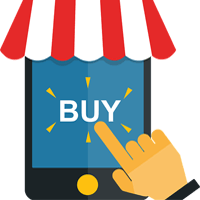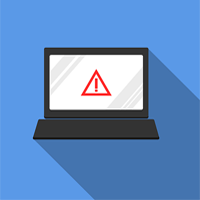5 Tips for Startups: Approaching Agencies & Brands

Are you trying to find a way in the door to compete for brand dollars? As you've probably learned, you have plenty of company.
Few digital startups have the relationships in place to generate instant clients from major brands or agencies. It's a Catch-22 situation because these business owners need to demonstrate examples and case studies to get in the door, but they can't generate highly relevant examples and case studies without first getting in the door.
Here are five tips to help open the door and hopefully close some early stage deals.
1. Try a partner approach.
Different brands and agencies have different pain points. Research and network to find the brands that are suffering heavily from issues that your product can solve. Then, reach out to them and tell them you are currently screening for the right partner on a piece of technology that solves these issues and you'd love to briefly discuss the potential to work together on it. Be transparent and open, while maintaining a compelling offer.
When you need to communicate with agency or brand contacts, do your best to offer a link to an article or resource that they would find informative and relevant to their day-to-day challenges and objectives. Be sure to include a brief statement about the content of the link and why you believe it's something they would appreciate. This conditions your contacts to view you as a helpful part of their day and as a great resource. Your emails may be opened more often.
3. Avoid dry runs.
You should approach every potential target with the objective of disqualifying them. Too often, effort is wasted with parties that are not in the proper business cycle or have other critical conflicts that immediately disqualify them as a potential client. Be reasonably objective and make sure all signs point to a possible fit. Avoiding dry runs with these candidates helps you stay focused on the places were your efforts could produce results.
4. Lead your presentation with value, not credibility indicators.
Let me guess - after your title slide is your agenda, followed by the company credentials and background. There is a much better way to compose your presentation. Following your title slide, and yes - before the agenda, feature a single slide showing results. When the presentation begins, tell your audience you respect their time and want to get right to the point to demonstrate exactly why this meeting matters.
I've seen this approach energize the room and make people put down their smartphones.
Regarding any background information on your company - I recommend 10-20 seconds. Seriously. What you should do is briefly state two or three key points and acknowledge that you have a 'leave-behind' one-sheeter that provides all the details they need to validate your background.
What you've just done is wake them up with results, show them respect for their time and cleverly managed to assure them that they will get all the info they need to validate you at their leisure. Not a bad start for slide two.
5. Assume a 30-minute window.
If you are asking for more than 30 minutes, you are shrinking opportunities. In today's world 30 minutes is about the maximum mental space most busy professionals can stomach when being asked to discuss something new, and possibly irrelevant to their work.
If your presentation is longer than 20 minutes - it's too long. Shoot for 10-20 minutes and leave yourself time for questions and next steps at the end of the presentation. During the presentation, do your best to keep the discussion open. Engage your audiences with specific questions that show you've done your research on them, and get them to participate. This keeps them attentive and active.
Another great benefit to the short presentation is focus. If your platform or service offers multiple solutions, make sure you are aware of exactly which solutions match the client's structure and scenario - don't confuse them with a catalogue of overwhelming options to choose from. When you do, you open the door for the client to delay next steps. The barrage of options may confuse them, or they could just use the indecision as a stall tactic in the closing process.
Integrate some of these tips into your current efforts. If you've got the right product or service that genuinely performs, this should help improve the results you are getting for your time and effort.
About the Author: Jason Small is a digital marketer with more than 10 years of digital experience working with 20-plus brands via various agency roles. Small's expertise includes broad digital strategy, social media strategy, SEO, website design and development. He has led teams to produce results for brands online such as Peoples' Choice Awards, ChapStick, Centrum, Dial, Honeywell, Renuzit, Castrol, Sears, Hertz, CoverGirl, John Deere, Advil, ThermaCare and more.









